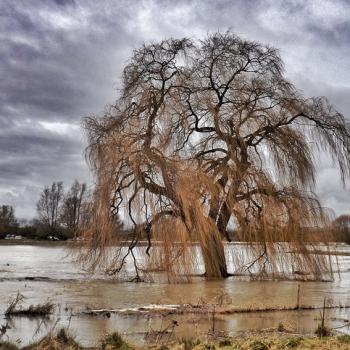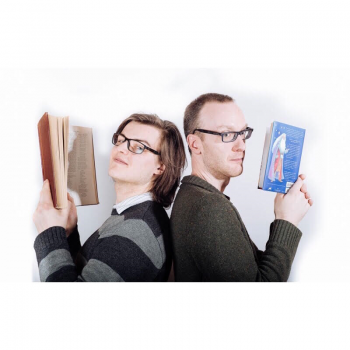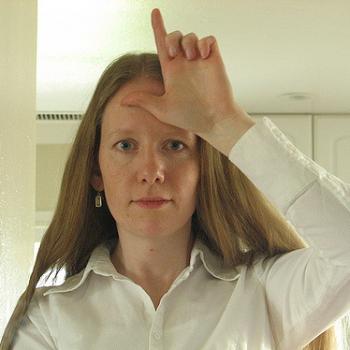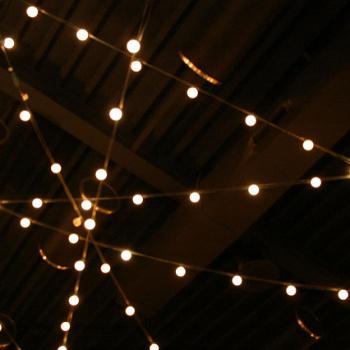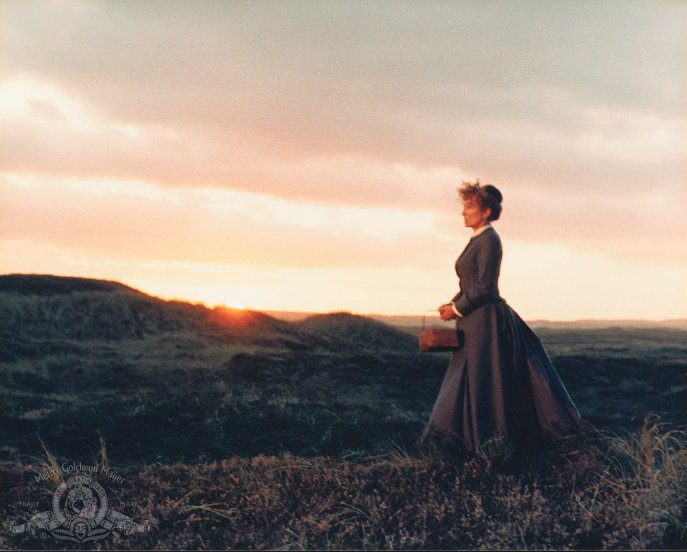 This post is part of a ten-part series drawing from the Arts and Faith Top 100 Films. You can read the introduction the series here, along with the schedule of films to be featured.
This post is part of a ten-part series drawing from the Arts and Faith Top 100 Films. You can read the introduction the series here, along with the schedule of films to be featured.
Then the angel said to me, “Write this: Blessed are those who are invited to the wedding supper of the Lamb!”
–Revelation 19:9, NIV
The Apostle’s Creed begins, “I believe in God the Father, Creator of heaven and earth.” That bare statement forever attaches the Christian faith to the belief that to God, matter matters. Just like when I read a book or watch a film, so, in the Bible beginnings and endings are important. God is the Creator, the One who made the “stuff” of our material world and then pronounced it “good” (Genesis 1-2). And when the end of time comes, he predicts the ultimate renewal of creation, the lowering down from heaven of the new heavens and new earth.
Then I saw “a new heaven and a new earth,” for the first heaven and the first earth had passed away, and there was no longer any sea. I saw the Holy City, the new Jerusalem, coming down out of heaven from God, prepared as a bride beautifully dressed for her husband. And I heard a loud voice from the throne saying, “Look! God’s dwelling place is now among the people, and he will dwell with them. They will be his people, and God himself will be with them and be their God. ‘He will wipe every tear from their eyes. There will be no more death’ or mourning or crying or pain, for the old order of things has passed away.”
–Revelation 21:1-4, NIV
In Isaiah and numerous other places in the Old and New Testaments, God promises a wedding feast to come–a fleshy, earthy affair if there ever was one. (More Biblical references to a coming feast or banquet.)
On this mountain the Lord Almighty will prepare
a feast of rich food for all peoples,
a banquet of aged wine—
the best of meats and the finest of wines.–Isaiah 25:6
This film for this week is the Danish masterpiece, Gabriel Axel’s Babette’s Feast–a film that portrays the beauty of created things and the lavish grace of the Creator.
In Robert Farrar Capon’s sublime work of creative nonfiction-cum-cookbook-cum-work of theology The Supper of the Lamb, he writes,
The old descriptions of heaven as the celestial banquet, the supper of eternal life, the endless convivium, hit close to the truth. Nowhere more than in good and formal company do we cast the praegustatum, the foretaste of what is in store for us.
… The dinner party is a true proclamation of the abundance of being–a rebuke to the thrifty little idolatries by which we lose sight of the lavish hand that made us. It is precisely because no one needs soup, fish, meat, salad, cheese, and dessert at one meal that we so badly need to sit down to them from time to time. It was largesse that made us all; we were not created to fast forever. … Enter here, therefore, as a sovereign remedy for the narrowness of our minds and the stinginess of our souls, the formal dinner for six, eight or ten chosen guests, the true convivium–the long Session that brings us nearly home (170-71).
* * *
As I watched this film, I was in the midst of reading Nancy Klein Maguire’s book about the Carthusian monks (the same order featured in the film Into Great Silence, which I wrote about last month), An Infinity of Little Hours. I was struggling with the book and with the monks’ way of life, just as I had struggled with the film about them. While the book is much more approachable than the film and provided the back story that I had been searching for in the film, reading it made me even more conscious of how little I am interested in spirituality for its own sake, how little I aspire to any faith practice that seeks to rise upward to God in some escape from the world of matter.



